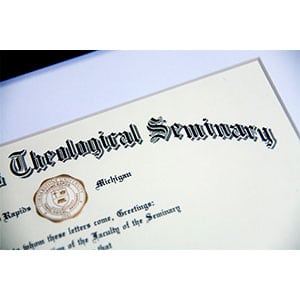Some people say handwriting is gone.
Whether you are saying “Good riddance” while typing out a text on your phone or an email on your computer or you’re on your way to the post office with a bundle of handwritten letters, there are a number of reasons why handwriting still matters.
A few years ago, headlines proclaimed that today’s children would no longer be taught cursive in school. Then came the experts quoting anecdotal facts about cursive helping dyslexic students learn to write and retain information better. And then came correlative evidence suggesting that SAT essays written in cursive score better on average than those written in print.
The reality is that we are just now witnessing the first effects of the decline of handwriting in education and culture.
But in the age of keyboards, touchscreens and voice-to-text, handwriting is as important as ever.
Here are a few reasons why.
Cognitive Development and Mental Connectivity
France reached a very different conclusion about cursive writing from American officials. In the early 2000s, the French Ministry of Education instructed schools to continue teaching cursive writing, actually moving up the age at which students begin to learn the script.
School inspector Viviane Bouysse told The Guardian, “For a long time we attached little importance to handwriting, which was seen as a fairly routine exercise, but in 2000, drawing on work in the neurosciences, we realized that this learning process was a key step in cognitive development.”
Many researchers have noted meaningful connections between handwriting and cognitive development and information retention.
Learning cursive forces the writer to be more deliberate in how the individual characters connect and how the words are spelled. Taking notes by hand instead of typing them out helps the brain make distinctions about what was said and which information is worth recording. With these tendencies, handwriting is a valuable tool for learning, development and information retention, all of which are important aspects of the education experience.
In a study published in Psychological Science, Pam A. Mueller of Princeton University and Daniel M. Oppenheimer of the University of California, Los Angeles studied the difference between notes taken by hand and those typed on a computer.
The study found that when people type notes, they’re more inclined to try to record as much of the lecture as possible verbatim. On the other hand, students who take notes by hand are forced to be more selective with what they record since they can’t write as fast as they can type. This selective processing enables them to more effectively understand and remember what they’ve heard.
This mental process is called generative note-taking, which Mueller and Oppenheimer define as summarizing, paraphrasing and trimming content, essentially passing it through your own brain “filter” before writing down the content as notes.
Non-generative note-taking is also known as rote transcription, which most people can do without processing or internalizing the information at all. Many psychologists believe that handwriting notes or even repeatedly writing down important information by hand is one of the best tools to improve memory retention.
Handwriting is a complex task—studies show that it uses the Reticular Activating System within the brain, which means our minds use a lot more power to process a word than they do when we simply read a word (or even type it). Handwriting is physical and mental, and our brains have to activate motor skills and thought-processing in order to put pen to paper and create words.
Long story short—when you want to remember what you’re writing down, skip the computer.
Handwriting Is More Creative
While this may sound like a subjective statement on the “lost art” of handwriting, many accomplished novelists note that their creative process is more effective when they draft their writing by hand.
Susan Sontag spoke poetically on the feeling of felt tip pens and well-sharpened pencils on paper in an interview with the Paris Review. Truman Capote famously rejected typewriters for his first drafts (and subsequent revisions!) And, a University of Washington study noted that school children wrote longer, faster and in more complete sentences when they wrote by hand than when they typed.
This suggests that the supposed speed and efficiency advantages of computers may well be negated by the more complex and complete process of writing by hand. It’s not just retro preferences that make handwriting an important tool—science supports that the process of writing is a more engaging way to compose thoughts, which uses more parts of the brain.
This creates a snowball effect where each subsequent word is chosen more carefully and the brain is more thorough and thoughtful because it is more involved in the task-at-hand.
Put simply, handwriting is not just an analog alternative to typing—it’s a more complete way to use the subconscious powers of the brain to create more creative work. Even though it “feels” slower and more tedious, handwriting often produces more focused and consistent results than the staccato bursts of typing, which is a boon to creativity and professionalism alike.
In fact, plenty of experts would suggest handwriting a draft of an important email you need to send, just to make sure you compose it well instead of toiling in front of an LED screen and constantly hitting backspace.
Handwriting Is More Personal
Speaking of professionalism, handwritten notes remain one of the most personal distinguishing factors in correspondence. In an era when we can dictate an email to a smartphone while driving a car with automated cruise control, sitting down and writing a note to a friend is meaningful.
A handwritten note creates a lifelong memento and conveys more thoughtfulness and time investment than an email or text, and it also incurs the same memory benefits as handwritten notes.
Creating thoughtful correspondence through letters, birthday cards or simple thank you notes is a way to weave more intentionality into your friendships. Whether you’re an aspiring author or simply interested in keeping in touch with your friends on a deeper level, the power of handwriting cannot be overstated.
Standard print or cursive letters (or the unique combination of print and cursive that many people develop over a lifetime of writing after learning both styles of writing) have the same effect. They are as unique as our own fingerprints and create a tangible final product from the thoughtfulness of our minds and the touch of pen to paper.
The Many Benefits of Handwriting
Whether you’re looking to retain more information in class, keep your mind sharp as you age, make your mark in professional or personal correspondence or simply compose better thoughts for yourself or for others, handwriting is a powerful tool.
It activates the brain in ways that no other form of thinking and communication can and creates a meaningful product for studying, self-reflection or communication with others.
In an era when many people are arguing for increased efficiency and automation in all processes, the act of handwriting is a special way to put some humanity back in every aspect of the content.
Now, more than ever, handwriting matters. In an age when handwriting is no longer the norm, its effect is more profound than it was before computers and smartphones took over as the primary method of communication. Pick up a pen and paper today and see for yourself—you might be surprised at how it makes your brain feel.











